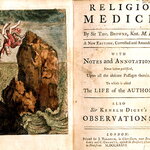Clinical Research

Hormone replacement therapy (HRT) for peri- and postmenopausal symptoms increases disease recurrence in breast cancer survivors, according to an article published online March 25 in the Journal of the National Cancer Institute.
Previous studies have shown that HRT increases breast cancer incidence in healthy women, but its impact on breast cancer survivors has remained obscure. Observational studies and one small randomized trial had suggested that HRT had no effect or even might reduce recurrence. However, two-year follow-up data from the randomized HABITS (Hormonal Replacement After Breast…

Researchers at Johns Hopkins have discovered that two clinically different inherited syndromes are in fact variations of the same disorder. The team suggests that at least for this class of disorders, the total number and “strength” of genetic alterations an individual carries throughout the genome can generate a range of symptoms wide enough to appear like different conditions.
“We’re finally beginning to blur the boundaries encompassing some of these diseases by showing that they share the same molecular underpinnings,” says Nicholas Katsanis, Ph.D., an associate professor of…

Omega-3 fatty acids are unsaturated fats found in some fish such as salmon and herring and in smaller amounts in eggs and chicken.
New research from the Child & Family Research Institute shows the typical North American diet of eating lots of meat and not much fish is deficient in omega-3 fatty acids and this may pose a risk to infant neurological development.
This discovery is an important step towards developing dietary fat guidelines for pregnant and breastfeeding women. Current dietary recommendations evolved from the 1950’s emphasis on reducing saturated fat intake to lower the…

Narcolepsy is a sleep disorder that causes people to fall asleep uncontrollably during the day. It also includes features of dreaming that occur while awake. Other common symptoms include sleep paralysis, hallucinations and cataplexy. About one out of every 2,000 people is known to have narcolepsy. It affects the same number of men and women.
The majority of patients with narcolepsy/cataplexy experience a number of symptoms of eating disorders, with an irresistible craving for food and binge eating as the most prominent features, according to a study published in the March 1 issue of the…

Each year, technologies initially intended for space exploration come into our everyday lives - if you still haven't tried Tang or pens that write upside down, you are living in a cave.
One innovation, which physicians for astronauts have shared with their terrestrial brethren, is a special suit called “Penguin.” After minor modifications, the “Penguin” suit has become the “Regent” suit and turns out to be an efficient therapeutic agent for rehabilitation of patients after a stroke.
Hypokinetic motor syndrome developed with cosmonauts who stayed for long periods in the weightlessness of…

"Men that look no further than outside think health an appurtenance unto life and quarrel with our condition of being sick. But I who have looked at the innermost parts of man and known what tender filaments that fabric hangs on oft wonder that we are not always so. And considering the thousand doors that lead to death do thank our God that I can die but once".Religio Medici -Sir Thomas Browne (1605-1682).
The Religio Medici ('The Religion of a Physician') described as a prose-poem, confession of faith and 'sort of private diary of the soul', is hard to categorize.…

A case is reported of a 28 year old man referring the appearance of swollen blisters due to insignificant trauma since birth. Later he noticed progressive changes of the skin as teleangectasies, atrophic spots, sensivity to sun, dystrohic fingermails and webbing between fingers.The patient was hospitalized several times for an appropriate diagnosis and asked for the permission to undergo an operation of plastic surgery in Paris to correct webbing of the hands.The rare association of two congenital diseases, epidermolysis bullosa dystrophica and poikiloderma, leads to the diagnosis of a…

Incontinentia pigmenti is a rare genodermatosis also called Bloch-Sulzberger syndrome or Bloch-Siemens, that shows early at birth or in the neonatal period.In its classical form,the cutaneous symptomatology develops through three steps.
1st step, with evidence of injuries, of erythematic-vescicular-blistered kind and one wave after another, linearly positioned and involving upper body and limbs;haematic hypereosinophilia is also present.
2nd step, that pops up between the second and the sixty life-week with papulo-lichenoid injuries,hyperkeratosic and warty, looking as elongatad striae in the…

The first descriptions of the disease are found again in the Textbook of Dermatology, published in 1874, "On disease of the skin, including exanthemata" London - New Sydenham Society, Hebra F.-Kaposi M.
The term "Xeroderma Pigmentosum" was coined from the hungarian dermatologist Moritz Kaposi wanting in such a way to indicate a characterized disease picture from pigmented and dry skin.Hereditary disease, trasmitted with recessive autosomical modality, the XP is characterized from extreme photosensivity that causes strict and premature damages to level of the cutis and of the eyes. Its…

Our bodies sense painful stimuli through certain receptors located in the skin, in joints and many internal organs. Specialized nerve fibers relay these signals coming from the periphery to the brain, where pain becomes conscious. “The spinal cord is placed between these structures as kind of a pain filter”, says Hanns Ulrich Zeilhofer, Professor at the Institute of Pharmaceutical Sciences at ETH Zurich and at the Institute of Pharmacology and Toxicology of the University of Zurich.
That filter assures that pain is not evoked by everyday stimuli like light touch. This is accomplished by…